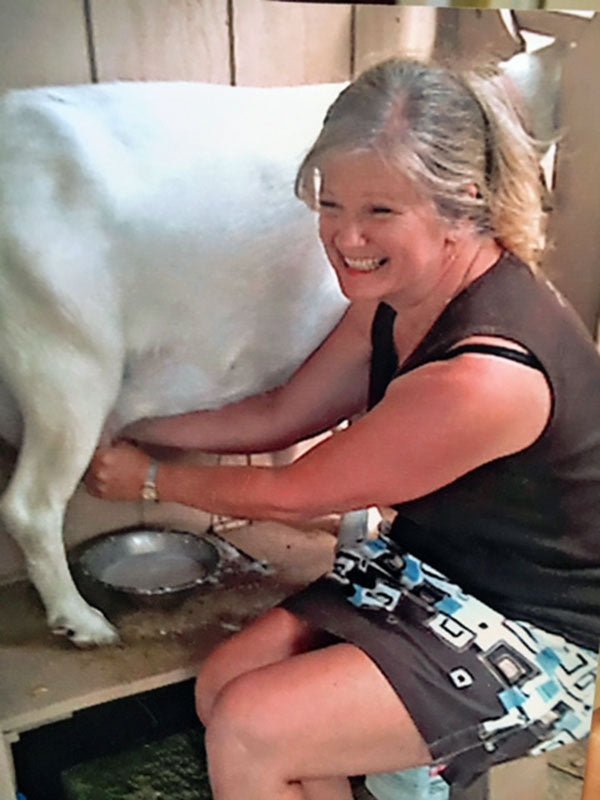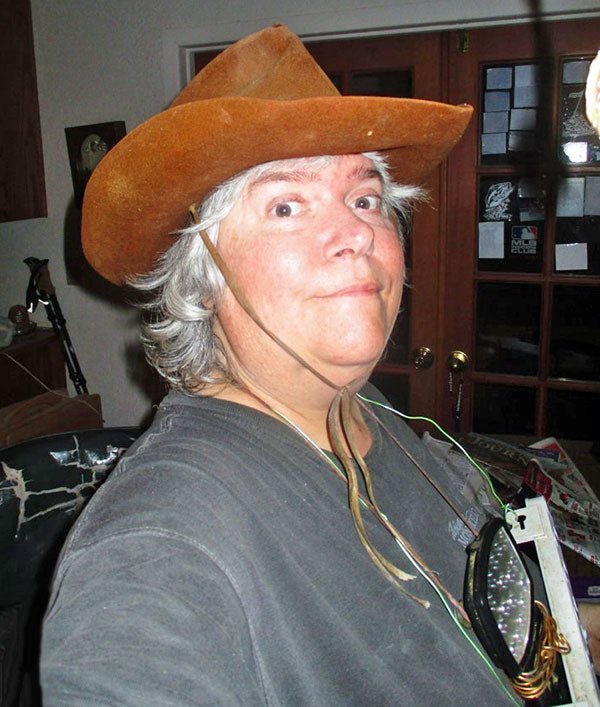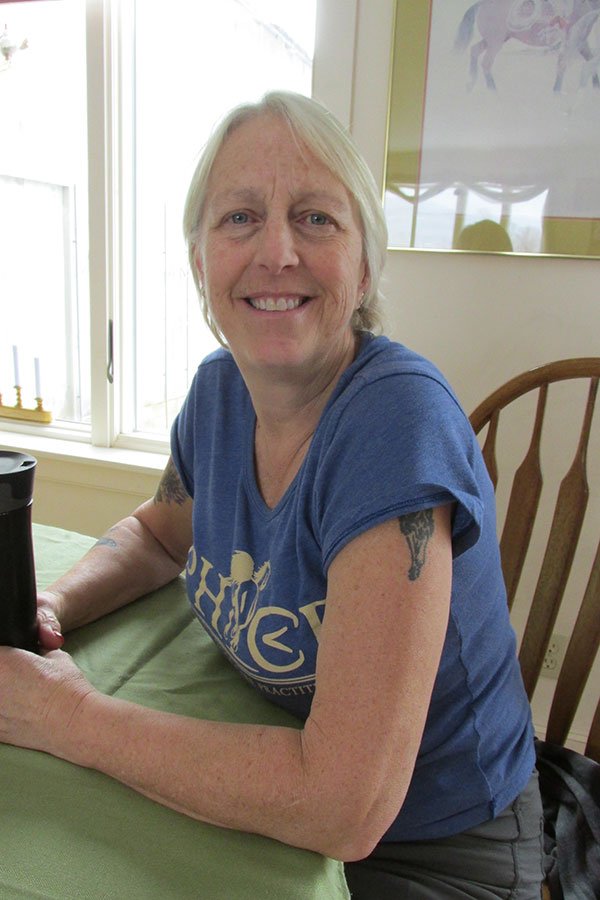
We often say that cheesemakers are the most interesting people in the world. We don’t know exactly why that is, but it holds true in every interview we do.
Lynn Keay is an inveterate “do-it-herselfer,” an artist in just about everything she does, and an exemplary role model for her young grandson (although she would never describe herself in such glowing terms!). She is also, of course, an accomplished cheesemaker who was kind enough to share her story with us…
Lynn’s Story
Before retiring a few years ago, I worked in various capacities in healthcare finance, information technology (IT), and pension investment management. I have a master’s degree in Business Administration but always loved life sciences more than finance. It’s in my Scandinavian blood.
Cheesemaking has become my favorite hobby in retirement. Fermentation is a magical way to preserve food to keep for years and makes it taste even better. Prior to retiring, weekend winemaking was a pastime for 10 years. Wine grapes grow abundantly in Northern California which makes winemaking an easy and fun hobby but, eventually, too much wine filled the cellar!
My immediate family and I all live in the Sacramento area. We have lots of extended family and friends here. Everyone enjoys the foothill lakes and rivers, nearby mountains, Lake Tahoe, and the short distance to ocean beaches. Also, my little grandson spends a couple days a week with me. We have so much fun together. I love being retired now. The biggest challenge is staying focused with so many interests and prioritizing the time on what matters most.

With twins and grandson
Back when my twins were toddlers, we lived on a couple of acres here in Sacramento and I bought a registered Toggenburg dairy goat. She was a good producer at nearly 2 gallons a day.

My mama goat Pretzel and her first doe Sassy
I tried making hard cheese back then but really had no idea what I was doing. We had yogurt and cottage cheese but I never got the hang of hard cheese. Much of the extra milk went to the chickens and turkeys or was traded with the neighbor. Unfortunately, I had to give up the goat after 3 years. (Had goat once but no cheese. Now have cheese – no goat!)

Demonstrating in 2011 how to milk a goat (Alpine) to home wine makers.
Some 30 years later, I became interested in making cheese again and started teaching myself through books, videos, and trial and error. I mastered mozzarella but wanted to learn other types.

Mozzarella stretch


Demonstrating how to make Mozzarella to home wine makers.
I’ve done a fair amount of research over the years, read white papers and articles, and I typically compare several recipes for the same cheese before choosing a recipe or method. New England Cheesemaking (cheesemaking.com) offers a solid resource for recipes, and understanding various methods and ingredients.
I really like Kristen’s YouTube’s from Hammock Haven Farm that I stumbled upon a few months ago. Gavin Webber’s YouTube’s are another great resource.
I’ve probably watched every video in France and England of commercial cheesemaking and a few Wisconsin Cheese tutorials. I try to visit small creameries and talk to cheesemakers in person. The book most frequently recommended to me is American Farmstead Cheese by Paul Kindstedt for his scientific expertise.

Dutch press built by a friend, Mike Anderson
I love learning simple cheesemaking tricks and the techniques used. One involves stacking a 5 gallon bucket in a 2nd 5 gallon bucket to press the cheese in molds without toppling over. The upper bucket can be filled with warm water to control the temperature and provide up to 40 pounds of weight. The mold in the lower bucket must be raised slightly to accommodate the draining whey.
Another technique shared by Marco Moramarco of Pazzo Marco Creamery in Gualala, California is the Flocculation Point method used to visually time the precise rennet set. I loved learning that one! Described in full detail here http://cheeseforum.org/articles/wiki-cheese-curds-when-to-cut/
I currently use a beverage refrigerator as my cave but I have adapted it with closed containers to manage humidity. I sort of guess at the moisture needs by watching the cheese. Now that it is winter, I can also use my garage space which stays in the temperature range needed. I am hoping to convert my large 450 bottle wine refrigerator in the future for cheese making.

Burrata with homemade pesto
I practice cheesemaking with the Kirkland brand of whole milk from Costco which seems to work well enough (not ultra-pasteurized and inexpensive). I would definitely rather use fresh raw milk but no reasonable urban source is available. Will keep looking.
I have tried making almost all the common types of cheese and have had plenty of failures, but I have found the greatest successes with Camembert/Brie style, blue cheese, feta, and cheddar.

Blue cheese with red wine
I’m still working on jack, Gouda, and others.

My first waxed cheeses.
Recently, I made your Robiola recipe and I am very happy with the results.

Robiola. (I re-purpose Costco cake containers for cheese ripening.)

Robiola uses geotricum candidum

Robiola at 6 weeks

I made my first robiola pizza recently using sourdough with your recipe for Robiolini! It had fennel, green pesto, roasted garlic and fresh tomatoes and bell peppers harvested from the garden.
I just started a 3 lb sweet Gouda. It’s in the drying off phase. I sure hope it works out. Right now it looks beautiful to me but I will probably be washing off dark mold spots every other day before long. I find it difficult to get the rind developed to a point where the cheese mostly just needs to be turned – dry enough for mold not to grow but not so dry it is lost.

Gouda
My worst disappointment was a 12 month Parmesan/Romano that was so dry I couldn’t cut it and it had an unpleasant off taste.
What is most difficult for me with hard cheese is the aging (affinage) – controlling the rind molds, humidity and air circulation over a long period of time. Off tastes seem to develop and it’s so much work.
I was hoping to find a breathable plastic to vacuum pack but no luck yet. I tried Foodsaver but the vacuum pressure surrounded the cheese in liquid and it soured. I also tried using beeswax (mixed with coconut oil) but had some issues with cracking, moisture developing under wax, and off flavor. I suspect my cheese was not dry enough.
After my experience with the Parmesan/Romano, I try to master cheeses that take less time to age and master a few rather than spoil so many.
Once I get more techniques mastered, I would like to add herbs, use more wine/beer/liqueur washes, and leaf wrappings to create unique regional cheeses of my own.
Other Interests
I’ve traveled to Spain, Germany, and several times to France now. I love to sample all the different regional cheeses with fresh breads and wines. Learning old methods to preserve food is fascinating—pickles, olives, bread, lemons, charcuterie, cheese, yogurt, wine, shrubs, orange liqueur, nocino and lemoncello. I also enjoy mushroom hunting when time allows.
I have been making wine for over 15 years. It began as an experiment with elderberries. My first wine – elderberry port, earned a surprising bronze ribbon at the CA State Fair. What a surprise! I then moved to blackberry and peach wine from an abundance of fruit on my property. I was hooked and started making grape wine from just about any type I could get my hands on – red, white and rose.
Living in CA made it easy with abundant vineyards in every direction. I joined Sacramento Home Winemakers to learn and share my hobby – eventually becoming the Treasurer, President and Board Chairman. I scaled back winemaking significantly after retirement to allow time for other interests.

Winemaking ribbons


2019 Danyal’s Monterey Chardonnay

Winemaking – the Barrel bung blew out!
Many other hobbies compete:
Gardening is a huge passion – my way of transforming the home environment and sharing it with others. To compensate for the drought, I removed most of the lawn
and designed flowerbeds with walkways on drip irrigation with timers. I miss living in the country with acreage, having chickens, goats, and a bigger vegetable garden
but less work now allows me time for family, cooking, and travel.




Growing orchids is another hobby I’ve acquired since retiring.

Orchid collection in bloom

Oyster mushroom kit

Growing oyster mushrooms from a kit

Another local edible mushroom found in the mountains

Morel mushrooms from the Sierra Nevada mountains
Last year I started making natural sourdough bread without yeast, using lactic fermentation.

Nutty grain sourdough

Braided sourdough with rosemary

Local olives cured with lye and Himalayan salt














































































































































